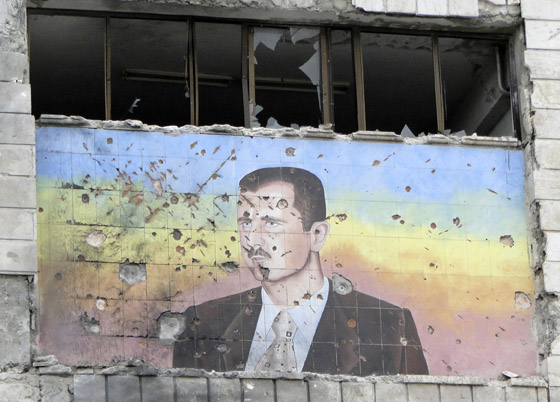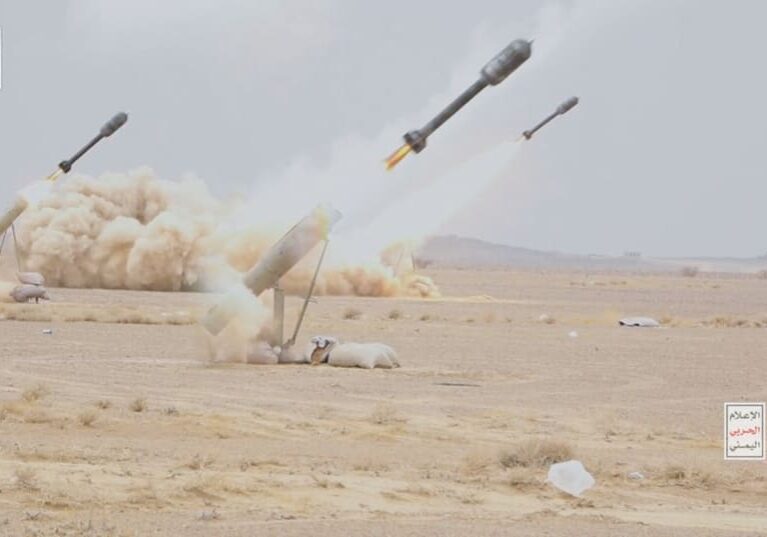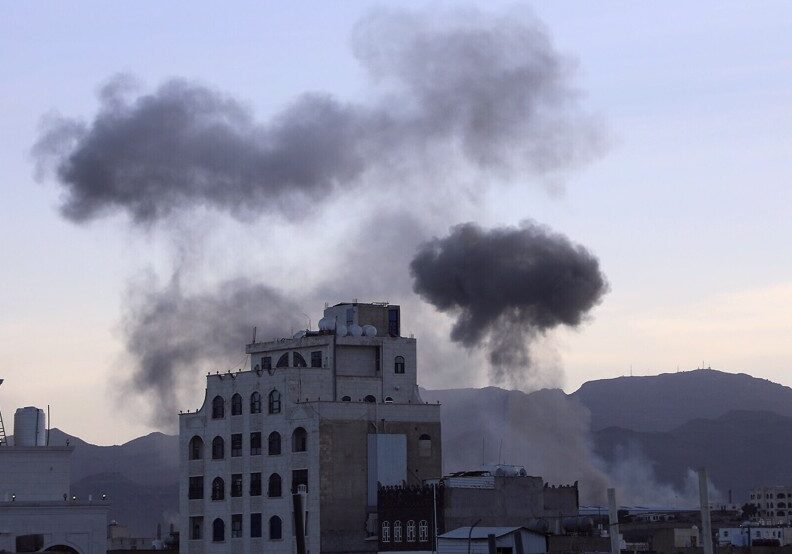Australia/Israel Review
Syria’s Five Conflicts
Aug 26, 2015 | Jonathan Spyer

Why the latest peace plans won’t bring peace
Jonathan Spyer
As the civil war over the ruins of Syria grinds on into its fifth year, the fighting seems nowhere near an end. Indeed, there is no longer a single war taking place in the country. Rather, as Syria physically divides into separate entities, so the conflict, too, further subdivides, spawning new conflicts.
There are today no less than five different conflicts taking place within the borders of the country: the contests between the Sunni Arab rebels and the Assad regime/Hezbollah/Iran (the original war which brought about the others); the Kurdish YPG’s fight against Islamic State; intermittent clashes between the Sunni Arab rebels and Islamic State; Islamic State’s own war against the Assad regime; and now also the renewed war between Turkey and the PKK, which is being played out partly on Syrian soil.
The presence of these five interlocking conflicts notwithstanding, efforts to make diplomatic progress toward some form of settlement, or at least freezing of the conflict, are under way.
Recent days have seen details emerge of two rival “peace plans” for Syria. One of these is sponsored by the Iranians, the main supporters of the Assad regime, the other is the handiwork of Saudi Arabia, which wants the removal of the regime and supports elements among the Sunni Arab rebellion against it.
Neither plan stands much chance of implementation. But the content of the plans and their very existence demonstrate that the Syrian situation is not static. They also indicate the extent to which the aims of the backers of the combatant sides are currently irreconcilable.
The Iranian proposal, according to a report in the Araby al-Jadeed newspaper on Monday, constitutes a plan for the freezing of the conflict in place and the subsequent de facto partition of Syria. According to the newspaper, the plan is being promoted by Iranian Foreign Minister Mohammed Javad Zarif during his current round of meetings with regional officials.
The plan proposes that each side would hold on to its current areas of control, except for the city of Aleppo, which would come under international supervision.
The regime and the rebels would then cooperate with the international coalition in the fight against Islamic State. Negotiations between the sides would continue, with the intention of forming a “national government, writing a new constitution and holding nationally monitored elections.”
The regime, according to the plan, would keep control of “Damascus, the Syrian-Lebanese border, Qalamoun, western Ghouta, Zabadani, Homs and the area to its west all the way to the Syrian coast, and Tartus Port.”
This is in essence the area controlled by the regime today. Yet the apparent willingness of the regime’s backers to “settle” for this area rather than to continue to hold out for the eventual reconquest of the entire country (Syrian President Bashar Assad’s aim throughout the war) reflects the declining military fortunes of the Assad regime.
The regime now controls only just over 20% of the area of Syria. In the north, it is reeling from the hammer blows inflicted by the Jaish al-Fatah (Army of Conquest) rebel coalition. This coalition includes some of the strongest Islamist rebel forces in Syria. Jabhat al-Nusra, the Syrian franchise of al-Qaeda, is a component part of it, as is Ahrar al-Sham, the most powerful of the “homegrown” Salafi groups on the Syrian battlefield.
It is supported by Qatar, Turkey and Saudi Arabia. The Saudi provision of US Tow antitank missiles, transported across the border from Turkey, is playing a telling role in the fighting, reducing the regime’s advantage in heavy weaponry.
As of now, Jaish al-Fatah is attempting to destroy the final regime positions on the Al-Ghab plain. Loss of these positions raises the frightening prospect for the regime of the front line moving into the populated parts of Latakia Province, the heartland of its support.
Already, the Alawi villages in Latakia are within range of the rebels’ missiles. Entry into Latakia would effectively end Assad’s hopes of preserving intact a safe area of the country for the members of his sect and other supporters of the regime.
Should the pivotal Joureen base in Ghab fall to the rebels, the regime would then face the possibility of its supply lines to the city of Hama further south being cut off.
The regime is therefore fighting desperately to hold its positions on the flat, barren Sahel al-Ghab. Hezbollah fighters are there, fighting alongside Shi’ite “volunteers” from as far afield as Afghanistan.
The motley collection of regime defenders in Ghab reflects the key difficulty that Assad has faced since the commencement of the war. The narrow base of support of his regime has meant that he has faced severe challenges in mustering sufficient manpower to defend the areas under his control.
The solution until now has been to reduce these areas. At a certain point, of course, the shrinking size of the regime’s domain raises the question of its continued viability. This point may now be approaching.
The Saudis, however, have made clear that the current Iranian proposals are unacceptable. The sticking point, as Saudi Foreign Minister Adel al-Jubeir outlined in a statement this week, is that Riyadh wants Assad’s immediate departure from power rather than a continued role for him in any transitional phase.
“There is no place for Assad in the future of Syria,” Jubeir said, speaking in Moscow after meeting Russian Foreign Minister Sergei Lavrov. “Assad is part of the problem, not part of the solution.”
Saudi counterproposals, as reported in the Al-Hayat newspaper this week, envisage the immediate cessation of Iranian and other outside support for the regime and the departure of Hezbollah fighters from Syria, followed by new, UN-supervised presidential and parliamentary elections, after the stepping down of Assad.
The differences are familiar and not yet close to being bridged. [Ed Note: Subsequent to the writing of this article, a unanimous UN Security Council Statement issued on August 17 seemed to adhere more closely to the Saudi position in calling for a political transition to end the conflict. While it doesn’t specifically mention Assad, Western governments have made it clear that a transition would involve his exit from power.]
The diplomacy, as ever, mirrors the military situation on the ground. Assad’s fortunes have declined. This is leading to reduced ambitions and consequently increased flexibility on the part of his backers. But there are no signs yet that his allies are about to desert him, nor that their reduced demands are anywhere close to being acceptable to the forces behind the rebels. So the fight goes on.
More importantly, it should be remembered that the war between Assad and the Sunni rebels is now only one of the several conflict systems that have torn Syria apart. So even if Assad’s declining fortunes were to lead to his departing the scene, the war for Syria’s succession, and the suffering of its inhabitants, would almost certainly not be at an end.
Dr. Jonathan Spyer is Director of the Rubin Centre for Research in International Affairs and author of The Transforming Fire: The Rise of the Israel-Islamist Conflict (Continuum, 2011). He will be visiting Australia in September. © Jerusalem Post, reprinted by permission, all rights reserved.
This article is featured in this month’s Australia/Israel Review, which can be downloaded as a free App: see here for more details.
Tags: Syria






